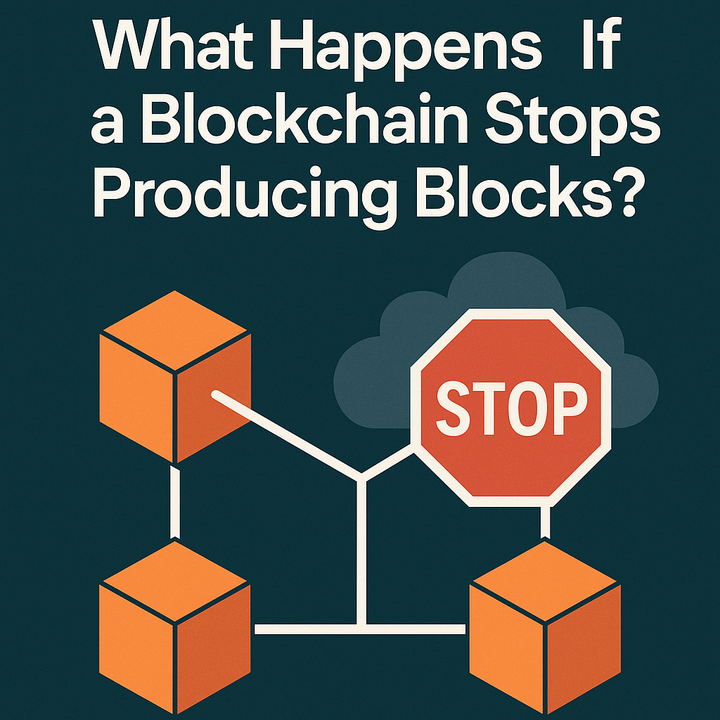Confidential Computing: TEEs as Blockchain’s Privacy Backbone

Abstract
Trusted Execution Environments (TEEs) transform blockchain from a transparent ledger into a privacy-preserving compute platform, enabling applications like confidential smart contracts, secure cross-chain bridges, decentralized oracles, and AI-driven solutions. By leveraging hardware-backed isolation, TEEs ensure data confidentiality and integrity, as demonstrated by projects like Secret Network, Oasis Network, Phala Network, and Cartesi’s alternative approach.
Compared to Zero-Knowledge Proofs (ZKPs), TEEs offer performance advantages but face trust and vulnerability challenges, driving hybrid solutions with ZKPs and Multi-Party Computation (MPC). This article explores TEEs’ principles, applications, limitations, and future trends, emphasizing their role in meeting regulatory demands and fostering Web3 adoption through composable privacy.
Introduction: Blockchain’s Privacy Challenge
Blockchain’s defining feature—its transparent, immutable ledger—ensures trust but limits applications requiring confidentiality, such as enterprise finance or personal data management (Metaschool).
Trusted Execution Environments (TEEs) address this by creating secure, isolated enclaves—protected memory regions within a processor that safeguard sensitive code and data from unauthorized access, even if the host system is compromised (Learn Microsoft).
TEEs’ remote attestation allows cryptographic verification of their authenticity, ensuring trust in decentralized systems.
This article examines TEEs’ core principles, key implementations (Intel SGX, ARM TrustZone), blockchain applications, and their comparison with ZKPs, drawing on case studies from Secret Network, Oasis Network, Phala Network, and Cartesi. It also explores emerging TEE technologies, regulatory implications, and future trends to highlight TEEs’ transformative potential in Web3.
The Web3 Privacy Landscape
The rise of Web3—decentralized applications built on blockchain—has intensified the need for privacy due to regulatory pressures like GDPR and CCPA, which mandate data protection, and enterprise demands for confidential transactions.
While privacy-focused blockchains like Monero and Zcash use cryptographic methods, TEEs offer a unique hardware-based approach, complementing technologies like Fully Homomorphic Encryption (FHE) and secure MPC.
This synergy positions TEEs as a cornerstone of Web3’s privacy toolkit, enabling secure computation without sacrificing blockchain’s trustless ethos. By addressing both technical and regulatory challenges, TEEs bridge the gap between public blockchains and real-world applications, paving the way for mainstream adoption.
Trusted Execution Environments: A Primer
Core Principles of TEEs
TEEs establish secure enclaves within a processor, isolating sensitive operations through hardware-enforced mechanisms. Their foundational principles include:
- Isolation: TEEs operate independently from the operating system (OS), hypervisor, and other applications, preventing external interference.
- Integrity: They ensure code and computations remain untampered, guaranteeing execution as intended.
- Confidentiality: Data is encrypted during processing, shielding it from unauthorized access, even by system administrators.
- Attestation: Remote attestation cryptographically verifies a TEE’s authenticity and integrity, allowing users to trust the environment before sharing data (Metaschool).
Initially used for Digital Rights Management (DRM) to protect copyrighted content, TEEs have evolved to secure enterprise, cloud, and AI workloads, demonstrating their versatility across computing domains (Wikipedia).
Key TEE Technologies
Intel SGX
Intel Software Guard Extensions (SGX) create encrypted memory enclaves, isolating specific code or data from other processes, including the OS and hypervisor. SGX minimizes the trust boundary—the scope of trusted components—to the enclave, protecting cryptographic keys and enabling applications like confidential AI and compliance. Its remote attestation verifies enclave integrity, ensuring secure data sharing. Microsoft Azure leverages SGX for enclave-based workloads, such as secure analytics (Intel).
ARM TrustZone
ARM TrustZone divides hardware into Secure and Non-secure Worlds. The Secure World handles sensitive operations, like mobile payments or cryptocurrency wallets, while the Non-secure World runs general applications (Renesas). Memory partitioning (via IDAU, SAU, and MPUs) and restricted peripheral access reduce the attack surface, making TrustZone ideal for resource-constrained devices like IoT and mobile systems (ARM Developer).
Emerging TEE Technologies
Beyond SGX and TrustZone, new TEE implementations are shaping blockchain’s future:
- AMD SEV (Secure Encrypted Virtualization): AMD’s SEV provides VM-level encryption, complementing Intel TDX. Used in cloud environments, SEV could secure blockchain nodes for confidential computing, reducing reliance on specific vendors.
- RISC-V TEEs (e.g., Keystone): Open-source RISC-V TEEs offer hardware isolation without proprietary constraints, aligning with blockchain’s decentralization ethos and addressing vendor trust concerns.
- GPU-based TEEs: Emerging GPU TEEs, like NVIDIA’s H100/H200, accelerate AI-driven blockchain applications, such as decentralized machine learning, by processing large datasets securely.
Comparison of TEE Technologies
| Feature | Intel SGX | ARM TrustZone | AMD SEV | RISC-V TEEs (e.g., Keystone) |
|---|---|---|---|---|
| Architecture | Enclave-based, encrypted memory regions | Dual-world, Secure/Non-secure separation | VM-level encryption | Enclave-based, open-source |
| Primary Use Case | Data centers, cloud computing | Mobile, IoT, embedded systems | Cloud, blockchain nodes | Decentralized systems |
| Isolation Mechanism | Memory encryption, access control | CPU state separation, memory partitioning (IDAU, SAU, MPUs) | VM encryption, secure nested paging | Memory isolation, open-source hardware |
| Attestation | Remote, cryptographic verification | Local, remote attestation optional | Remote attestation | Remote, open-source attestation |
| Trust Boundary | Granular, application-specific | Broad, device-wide | VM-specific | Granular, vendor-neutral |
| Performance | High, ~6% overhead for enclave operations | Moderate, optimized for low-power devices | High, VM-level efficiency | Moderate, depends on implementation |
| Scalability | Limited by enclave memory size (~128 MB) | High, system-wide for embedded devices | High, scalable for cloud VMs | Moderate, growing with RISC-V adoption |
| Vendor Dependency | High, relies on Intel | High, relies on ARM | High, relies on AMD | Low, open-source ecosystem |
| Typical Applications | Confidential smart contracts, AI inference (e.g., Secret Network) | Mobile payments, crypto wallets | Blockchain node security, cloud workloads | Decentralized AI, privacy-preserving dApps |
| Security Vulnerabilities | Side-channel attacks (e.g., Spectre) | Physical attacks, DMA vulnerabilities | Side-channel risks, firmware bugs | Limited, but less mature ecosystem |
| Development Complexity | High, requires SGX SDK expertise | Moderate, TrustZone APIs simpler | Moderate, integrates with cloud frameworks | High, open-source tools less mature |
Table 1: Expanded Comparison of TEE Technologies.
TEEs in Blockchain: Revolutionizing Privacy
General Applications
TEEs enable blockchain to handle sensitive data securely, addressing transparency limitations (Metaschool). Key applications include:
- Privacy-Preserving Smart Contracts
- Cross-Chain Bridge Security
- Decentralized Oracle Networks
- Confidential AI and Machine Learning
- Confidential DeFi and DAOs
- Healthcare Data Sharing
- Supply Chain Provenance
- Gaming and NFTs
Case Studies
Secret Network
Launched in 2020, Secret Network is a Layer 1 blockchain with “privacy by default” smart contracts, encrypting transaction inputs, outputs, and states within Intel SGX enclaves (ResearchGate). Its Secret Contracts, built on CosmWasm in Rust, ensure code transparency while protecting data. The Confidential Computing Layer integrates with over 30 EVM and Cosmos chains, enabling privacy-first dApps on Ethereum, Solana, and Layer 2s. For example, a DeFi protocol like Shade Protocol uses Secret Contracts for private trading, shielding user positions. SecretVM supports containerized workloads, and SecretAI leverages GPU TEEs for private AI, such as secure LLM inference for financial analytics . As of 2025, Secret Network supports over 50 dApps, demonstrating robust adoption.
Oasis Network
Oasis Network’s Sapphire is the first confidential Ethereum Virtual Machine (EVM), using Intel SGX to encrypt smart contract data (Oasis Network). Its ParaTime Architecture separates consensus and execution, with confidential ParaTimes like Sapphire mandating TEEs, achieving up to 10,000 transactions per second. For instance, a Sapphire-based voting dApp ensures private ballots for DAOs. Oasis integrates ZKPs, FHE, and MPC via the Oasis Privacy Layer (OPL), enabling plug-and-play privacy for Ethereum and Solana dApps. This composable privacy approach supports applications like secure identity verification (Reddit).
Phala Network
Built on Polkadot, Phala Network’s Phala Cloud offers a TEE-based decentralized cloud platform with end-to-end encryption for data in transmission, use, and storage. Using Intel SGX and NVIDIA H100/H200 GPU TEEs, it supports confidential AI, such as a chatbot processing sensitive healthcare queries without exposing user data (Phala Cloud). In production mode, Phala ensures no platform access to LLM inputs, with a network of over 1,000 TEE nodes in 2025 . This positions Phala as a decentralized IaaS/PaaS, mirroring traditional cloud services for Web3 (Phala Network).
Cartesi’s Alternative Approach
Cartesi avoids TEEs, using a RISC-V-based Linux VM (Cartesi Machine) for off-chain computation with on-chain verification. Its Rollups framework scales complex computations, such as AI-driven fraud detection in DeFi, while ensuring “provable determinism” for trustless verification (Cartesi Docs). For example, a Cartesi-based dApp might analyze transaction patterns off-chain, verifying results on-chain without hardware trust. This software-based approach contrasts with TEEs’ vendor reliance, offering an alternative for decentralized AI.
TEEs vs. Zero-Knowledge Proofs: A Comparative Analysis
Fundamental Differences
- TEEs: Hardware-based, using secure enclaves for isolation and encryption, relying on vendor trust (Fleek). An enclave is a protected memory region inaccessible to external processes.
- ZKPs: Cryptographic proofs demonstrating knowledge without revealing data, offering trustless security via mathematical soundness.
Strengths and Weaknesses
| Feature | TEEs | ZKPs |
|---|---|---|
| Technology | Hardware isolation within secure enclaves | Cryptographic proofs of knowledge |
| Security Model | Relies on trusted hardware for data integrity and confidentiality | Trustless, based on mathematical verification |
| Data Exposure | Encrypted in enclaves during computation | No data revealed; privacy by design |
| Scalability | Limited by hardware and infrastructure | High, especially with zk-Rollups for transaction aggregation |
| Computational Overhead | Low (~6% overhead for enclave operations) | High (100x–1000x compute power required) |
| Trust Assumptions | Vendor-dependent (e.g., Intel, ARM) | Trustless, relies on cryptographic primitives |
| Implementation Complexity | Simplifying tools emerging (e.g., Fleek Machines) | Requires specialized cryptographic expertise |
| Ideal Use Cases | Confidential smart contracts, AI workloads, secure oracles | Privacy-preserving transactions (e.g., Zcash), blockchain scalability |
| Verification Speed | Fast, leveraging hardware acceleration | Slower, due to complex proof generation and verification |
| Deployment Cost | High, requires specialized hardware (e.g., SGX-enabled CPUs) | Moderate, software-based but computationally intensive |
| Regulatory Compliance | Supports compliance (e.g., GDPR) via encrypted processing | Strong compliance via non-disclosure, but complex to audit |
| Ecosystem Maturity | Mature in cloud and mobile, growing in blockchain | Rapidly evolving, with robust frameworks like zk-SNARKs |
| Privacy Guarantees | Strong, but vulnerable to side-channel attacks | Absolute, no data leakage under correct implementation |
Table 2: TEEs vs. ZKPs.
Complementary Approaches: A Synergistic Privacy Toolkit
Trusted Execution Environments (TEEs), Zero-Knowledge Proofs (ZKPs), Multi-Party Computation (MPC), and Fully Homomorphic Encryption (FHE) form a powerful privacy toolkit for blockchain. By combining TEEs’ hardware-based security, ZKPs’ trustless verification, MPC’s multi-party coordination, and FHE’s encrypted analytics, these technologies create composable privacy solutions that address diverse Web3 needs, from confidential DeFi to secure voting. This synergy mitigates individual limitations, enabling robust, scalable, and compliant decentralized applications.
Complementary Approaches
TEEs, ZKPs, and MPC form a synergistic privacy toolkit:
- TEE + MPC: TEEs secure MPC hosts, protecting multi-party computations from system-level attacks.
- TEE + ZKP: TEEs generate tamper-proof ZKPs, ensuring proof integrity for applications like private voting.
- Hybrid Models: Oasis integrates TEEs, ZKPs, MPC, and FHE via OPL, supporting dApps across EVM chains.
Challenges and Limitations
Trust in Hardware Vendors
TEEs rely on vendors like Intel or ARM, introducing centralization risks that conflict with blockchain’s decentralized ethos (a16z Crypto). Potential backdoors or vendor vulnerabilities could compromise security, necessitating open-source alternatives like RISC-V TEEs.
Vulnerabilities
TEEs face risks including:
- Side-Channel Attacks: Exploiting timing or power leaks (e.g., Spectre) to infer data (Fleek).
- Isolation Bugs: Flaws in TEE mechanisms compromising security (a16z Crypto).
- Trusted Application Errors: Vulnerabilities in TEE software.
- Memory Corruption: Buffer overflows affecting enclaves.
- Physical Attacks: Risks with direct chip access (a16z Crypto).
Regulatory and Ethical Considerations
- Regulatory Compliance: TEEs aid compliance with GDPR’s data minimization by encrypting sensitive data, but vendor-specific chips face export control scrutiny, complicating global deployment.
- Ethical Concerns: TEEs’ strong privacy could enable illicit transactions, raising ethical debates about balancing transparency and confidentiality in blockchain.
- Global Variations: The EU enforces strict data protection, favoring TEE adoption, while Asia prioritizes TrustZone for mobile applications, reflecting diverse regulatory landscapes.
Mitigation Strategies
- Design for Failure: Use TEEs with backup mechanisms to limit compromise impact (a16z Crypto).
- Prioritize Privacy: Protect data privacy over transaction integrity to minimize attack consequences (a16z Crypto).
- Use ORAM: Obscure memory access patterns to prevent leakage (a16z Crypto).
- Key Rotation and Forward Secrecy: Limit key exposure damage (a16z Crypto).
- Code Auditing: Ensure robust TEE applications through formal verification (ResearchGate).
Conclusion: The Future of Confidential Computing
TEEs are pivotal in transforming blockchain into a privacy-preserving compute platform, enabling applications from confidential DeFi to secure healthcare data sharing. Secret Network’s cross-chain privacy, Oasis’s confidential EVM, Phala’s decentralized cloud, and Cartesi’s software-based verifiability showcase diverse approaches to confidential computing. Compared to ZKPs, TEEs offer performance but require hardware trust, driving hybrid solutions with ZKPs and MPC. Despite vulnerabilities like side-channel attacks, mitigation strategies ensure TEEs’ viability.
Future Trends
- Quantum Resistance: Research into quantum-resistant TEEs addresses future cryptographic threats, ensuring long-term security.
- Decentralized TEE Networks: Distributing TEE computations across nodes reduces vendor reliance, aligning with blockchain’s ethos.
- Web3 Standards Integration: TEEs supporting W3C Decentralized Identifiers (DIDs) enable private identity management, enhancing interoperability.
Call to Action
Developers should explore TEE SDKs (e.g., Intel SGX SDK, ARM TrustZone APIs) to build privacy-first dApps, leveraging tools like SecretVM or Sapphire. Enterprises must adopt TEE-based blockchains for compliance-driven use cases in finance, healthcare, and supply chains. By combining TEEs with ZKPs and MPC, Web3 can achieve composable privacy, driving mainstream adoption and unlocking blockchain’s full potential.
References
- a16z Crypto, https://a16zcrypto.com/posts/article/trusted-execution-environments-tees-primer/
- ARM Developer, https://developer.arm.com/documentation/101892/latest/Security—Arm-TrustZone-technology
- Cartesi Docs, https://docs.cartesi.io/cartesi-rollups/1.5/core-concepts/architecture/
- Fleek, https://fleek.xyz/blog/learn/comparing-tees-vs-zkps-for-secure-computing/
- Intel, https://www.intel.com/content/www/us/en/products/docs/accelerator-engines/software-guard-extensions.html
- Learn Microsoft, https://learn.microsoft.com/en-us/azure/confidential-computing/trusted-execution-environment
- Metaschool, https://metaschool.so/articles/trusted-execution-environments-tees
- Intel, https://www.intel.com/content/www/us/en/developer/tools/software-guard-extensions/overview.html
- Oasis Network, https://oasis.net/sapphire
- Phala Cloud, https://cloud.phala.network/privacy
- Phala Network, https://phala.network/posts/tee-vs-mpc-vs-zk-whats-the-best-for-confidential-computing
- Renesas, https://www.renesas.com/en/document/whp/benefits-using-arm-trustzone-your-design
- ResearchGate, https://www.researchgate.net/publication/388035906_Secret_Network_Advancing_Privacy_in_Blockchain_Applications
- Wikipedia, https://en.wikipedia.org/wiki/Trusted_execution_environment
Similar Articles
Powering Nexus: How Folding Schemes Scale Verifiable Proofs
Laying the Foundation: 'The One-Time Setup' for Nexus zkVM Architecture
Scaling Verifiable Computation: The Nexus Network, A Verifiable Supercomputer
The Nexus Virtual Machine (NVM): A Finely Tuned Engine for Verifiable Computation
zk‑SNARKs to zk‑STARKs: The Evolution of Zero‑Knowledge in Web3
Succinct SP1 zkVM: Democratizing Zero-Knowledge Proofs for Rust Developers
🧬 How Replacing the EVM with RISC-V Could Accelerate Mitosis’ Programmable Liquidity Vision
The Future of Web3 Security: Verifiability Without Visibility Using zkTLS and FHE
Unpacking Blockchain's Engines: A Comprehensive Look at Virtual Machines



Comments ()